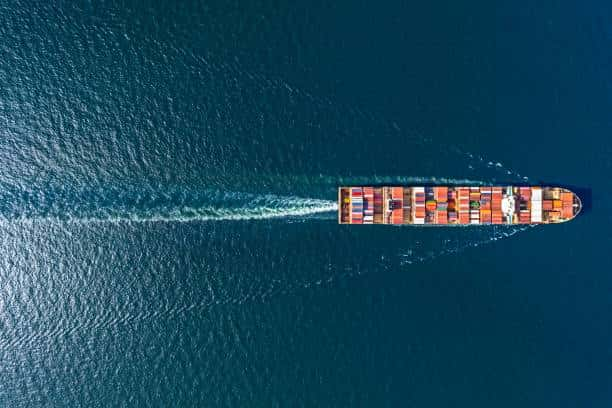Red Sea Crisis Case Study: 3 Proven Supply Chain Diversion Strategies
The Red Sea shipping crisis, triggered by Houthi attacks on commercial vessels, has thrown global supply chains into disarray. With major container lines avoiding the Suez Canal, transit times around the Cape of Good Hope have skyrocketed, causing widespread delays and cost volatility.
Many businesses faced a critical question: how do we keep our supply chain moving without crippling our budget or losing customers?
This case study outlines three real-world strategies we deployed for our clients, offering actionable models you can apply to your operations.
Strategy 1: The Air-Sea Hybrid for High-Value, Time-Sensitive Goods
This model is ideal for businesses that cannot afford the full cost of air freight but need faster delivery than the extended sea route allows.
Scenario: A German automotive parts supplier needed a steady flow of electronic components from Shenzhen, China, to Stuttgart, Germany. A full sea freight delay of 14-21 days was unacceptable for their production line, but pure air freight was financially unsustainable.
Solution: Air-Sea Hybrid via a Stable Transshipment Hub.
Route: Shenzhen (by sea) → Jebel Ali, UAE (by air) → Stuttgart.
Core Logic: Shipments traveled by sea from China to Jebel Ali, a major Middle Eastern hub unaffected by the Red Sea crisis. They were then transferred to scheduled air freight for the final leg to Europe.
Result: This cut the total transit time by approximately 10-12 days compared to the full Cape route, at a cost 40-50% lower than pure air freight from China. The client maintained production continuity without exhausting their logistics budget.
Strategy 2: The Land-Sea Corridor (China-Europe Rail) for Balanced Cost & Reliability
For cargo that is less time-critical but too valuable for a 30+ day ocean journey, intermodal solutions offer a compelling alternative.
Scenario: A UK e-commerce retailer sourcing consumer goods from Yiwu, China, needed to replenish inventory for a major sales season. They were facing stockouts due to the unpredictability of sea freight schedules.
Solution: China-Europe Railway + Final Trucking.
Route: Yiwu (by rail) → Małaszewicze, Poland (by truck) → UK Fulfillment Centers.
Core Logic: We leveraged the China-Europe rail network, which bypasses the maritime conflict zone entirely. Goods traveled by train to a key Polish rail hub, then were transloaded to trucks for the final road leg to the UK.

Result: A consistent transit time of 18-22 days, far more reliable than the Cape route. The client gained predictable lead times for inventory planning, ensuring they could meet customer demand during their peak season.
Strategy 3: Proactive Inventory Buffering & Slow-Steaming Ocean Freight
This cost-optimized strategy is for businesses with stable demand and the warehouse space to plan ahead, turning a crisis into a long-term cost-saving opportunity.
Scenario: A US-based furniture importer in North Carolina sourcing from Ho Chi Minh City, Vietnam, had high-volume, low-margin products. Their top concern is how to deal with the significant increase in shipping costs.
Solution: Advanced Buffer Stock + Economical Ocean Routing.
Route: Ho Chi Minh City (by sea, via Cape of Good Hope) → Savannah, GA (by rail/truck) → North Carolina.
Core Logic: We worked with the client to forecast demand 60-90 days in advance and build buffer inventory. This allowed us to book shipments on slower, more economical ocean services via the Cape. We factored in the longer transit time (35-45 days) as a new baseline in their supply chain planning.
Result: The client absorbed a known, planned delay instead of dealing with unpredictable ones. By avoiding premium surcharges and utilizing slower services, they kept their shipping costs under control, protecting their margins on high-volume goods.
Key Takeaways for Your Supply Chain
The Red Sea crisis underscores that reliance on a single trade lane is a significant risk. A resilient supply chain is built on diversification.
Audit Your Product Portfolio: Not all SKUs require the same speed. Classify your goods by value, urgency, and margin to match them with the right strategy.
Embrace Data-Driven Visibility: Real-time tracking across sea, air, and land is no longer a luxury. It’s essential for managing complex, multi-modal shipments.
Partner for Flexibility: Your logistics provider must have a global network and the expertise to pivot quickly. The ability to execute these strategies relies on strong partnerships at ports and hubs worldwide.
Facing disruptions on your key shipping lanes? Our experts specialize in designing agile, cost-effective logistics solutions tailored to geopolitical challenges. Contact us today for a personalized supply chain risk assessment.
Related Posts
5 Steps to Resolve Customs Seized Cargo Urgently: A Practical Logistics Guide
5 Steps to Resolve Customs Seized Cargo Urgently: A Practical…
Peak Season E-commerce Logistics: A Hybrid Fulfillment Strategy for Sales Events
Peak Season E-commerce Logistics: A Hybrid Fulfillment Strategy for Sales…
How We Saved $78K for a Medical Equipment Importer Facing Ocean Delay Disaster
How We Saved $78K for a Medical Equipment Importer Facing…

